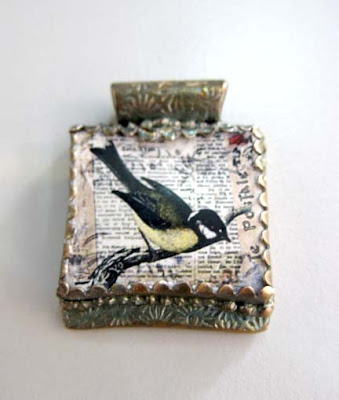
While in Australia, I taught a two-day workshop on electroforming and plating. I enjoyed the group and their enthusiasm. I especially appreciated their good humor when our copper plating solution was lacking the necessary acid needed for successful plating on the first day of class. It's not like I can travel with that stuff, so I'm at the mercy of local sources. I lost a bit of sleep that night trying to figure out how to rescue the pieces.
Luckily, Keith Lo Bue, a well-known jewelry artist and teacher came to the rescue. He was attending the class, and just happened to have some hydrochloric acid at home, which he brought in for day two. It worked great, and we were able to finish quite a few pieces. Then we proceeded to plate several of the pieces with gold, silver and nickel using prepared plating solutions. Check out the results in the photo above.
 On the second day of the workshop, we etched on copper and then applied images on nickel silver. Then we riveted the pieces together to make mixed-media bracelets. I was so busy, I forgot to take pictures, but the projects were based on my sample shown in this photo.
On the second day of the workshop, we etched on copper and then applied images on nickel silver. Then we riveted the pieces together to make mixed-media bracelets. I was so busy, I forgot to take pictures, but the projects were based on my sample shown in this photo.


























